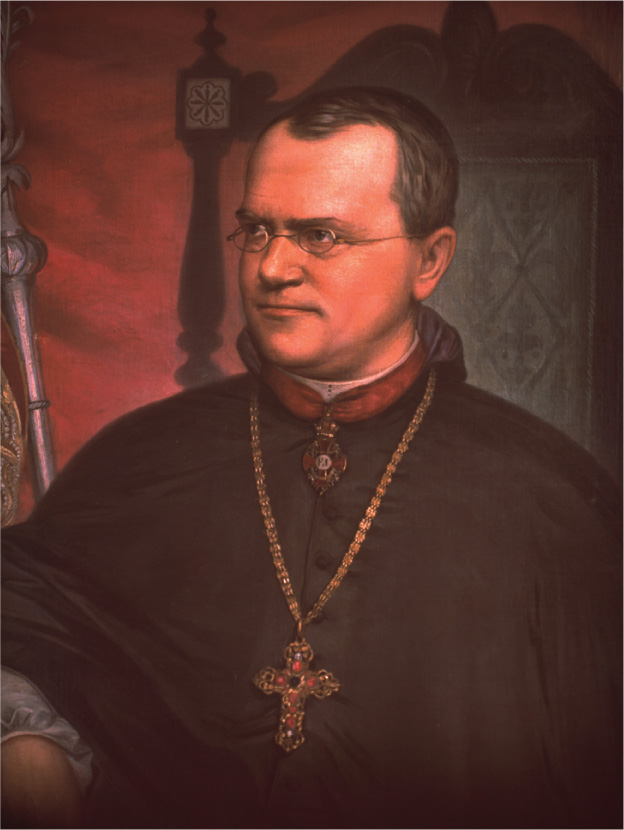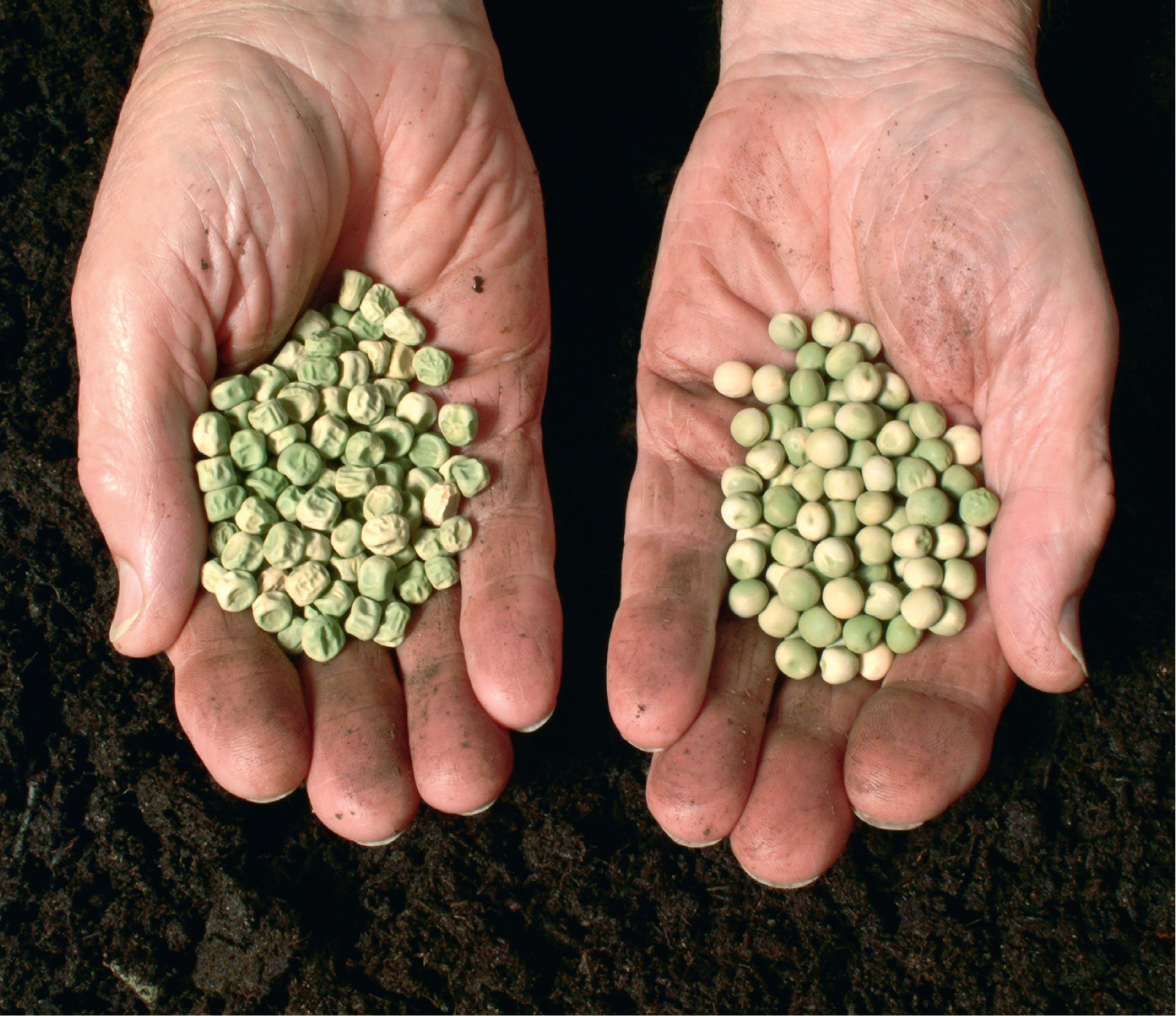
Austrian botanist Gregor Johann Mendel (1822–1884).
Sometimes the significance of experiments is not widely appreciated at first, either because they receive little publicity, or because they do not fit into the framework of current thinking – or both, as in the case of Gregor Mendel’s investigation of inheritance in peas.
Mendel was a monk, based at a monastery in Brno (then part of the Austro-Hungarian Empire but now in the Czech Republic). He was also a trained scientist who had studied at the University of Vienna. This was not an unusual combination in those days – the same monastery also had a botanist and an astronomer among its ranks, and it was an intellectual as well as a religious centre. Mendel’s main role in the community was as a teacher at the local school, but from 1856 onwards he also had time to carry out a series of experiments on the way in which heredity works in pea plants.

He chose peas because he knew that they had distinctive characteristics that bred true and which could be analysed statistically. The characteristics he studied included whether the seeds were rough or smooth, whether they were yellow or green, and so on. What made this work special, for the time, was that he approached the study of biology like a physicist, carrying out repeatable experiments, keeping detailed records, and applying proper statistical tests to analyse what he saw. He started out with some 28,000 plants, and chose 12,835 for detailed investigation. Each plant was identified as an individual, and records of its descendants were kept like a family tree. He had to know the parents, grandparents, and so on of each plant in succeeding generations, so he had to fertilize every flower of thousands of plants by hand, dusting the pollen from a specific single plant on to the flowers of another specific single plant. Then, he had to analyse the nature of the resulting seeds, plant them, tend the next generation of plants as they grew, and repeat the whole process. It took him seven years to determine the way the characteristics he was studying were passed on from one generation to another.

Mendel studied seven characteristics in all, but we can understand what he found using the rough/smooth example already mentioned. He discovered that there is something in a plant that is passed from one generation to the next and determines the nature of the offspring. That something, we now know, is a package of genes, and we shall use the term to describe what Mendel found, even though he did not use it himself (he referred to hereditary elements). Mendel’s statistics showed that the properties he studied related to pairs of genes. There is a gene for roughness, R, and a gene for smoothness, S. A single plant must inherit one possibility from each parent, so it may contain any of the possible combinations RR, RS, or SS. It passes one of these on to the next generation. An RR or SS plant has no choice but to pass on R or S, respectively. But an RS plant will pass on R to half its offspring and S to the other half. RR plants always have rough seeds. SS plants always have smooth seeds. But what happens in RS plants? The statistics showed that in this case the R is ignored and the peas are all smooth.
The evidence came from crossing plants that always produce rough seeds (RR) with plants that always produce smooth seeds (SS). Only 25 per cent of the offspring had rough seeds, while 75 per cent had smooth seeds. This is because 25 per cent of the offspring are RR, 25 per cent are SS, and the rest, adding up to 50 per cent, are either RS or SR, both of which give smooth seeds.
Mendel’s results were published in 1866, but their significance was not appreciated. It was only at the end of the nineteenth century, when other researchers independently discovered the same laws of inheritance, that his papers were rediscovered and he was given the credit he deserves. The laws of inheritance that Mendel discovered are of key importance in understanding the theory of evolution by natural selection. First, they explain why offspring do not have properties that are a blend of the characteristics of their parents. Offspring of a cross between R and S plants always come out either rough or smooth, not some slightly wrinkled middle compromise. This had been a key puzzle since the publication of Darwin’s Origin in 1859, because such blending would remove (or at least reduce) the variability on which natural selection operates. Secondly, Mendel showed that each characteristic is inherited independently. Whether or not the pea is green or yellow, for example, does not affect whether it is rough or smooth. The next step towards an understanding of the mechanism of evolution would be taken by Thomas Hunt Morgan, early in the twentieth century (see here).